Molecular and biochemical components associated with chilling tolerance in tomato: comparison of different developmental stages
- PMID: 39232835
- PMCID: PMC11375913
- DOI: 10.1186/s43897-024-00108-0
Molecular and biochemical components associated with chilling tolerance in tomato: comparison of different developmental stages
Abstract
The cultivated tomato, Solanum lycopersicum, is highly sensitive to cold stress (CS), resulting in significant losses during cultivation and postharvest fruit storage. Previously, we demonstrated the presence of substantial genetic variation in fruit chilling tolerance in a tomato recombinant inbred line (RIL) population derived from a cross between a chilling-sensitive tomato line and a chilling-tolerant accession of the wild species S. pimpinellifolium. Here, we investigated molecular and biochemical components associated with chilling tolerance in fruit and leaves, using contrasting groups of "chilling tolerant" and "chilling sensitive" RI lines. Transcriptomic analyses were conducted on fruit exposed to CS, and gene expressions and biochemical components were measured in fruit and leaves. The analyses revealed core responding genes specific to either the cold-tolerant or cold-sensitive RI lines, which were differentially regulated in similar fashion in both leaves and fruit within each group. These genes may be used as markers to determine tomato germplasm cold tolerance or sensitivity. This study demonstrated that tomato response to CS in different developmental stages, including seedling and postharvest fruit, might be mediated by common biological/genetic factors. Therefore, genetic selection for cold tolerance during early stages of plant development may lead to lines with greater postharvest fruit chilling tolerance.
Keywords: Chilling; Cold; Postharvest; Storage; Tomato.
© 2024. The Author(s).
Conflict of interest statement
The authors declare that they have no competing interests. Dr. Amnon Lers is a member of the Editorial Board for Molecular Horticulture. He was not involved in the journal's review of, and decisions related to, this manuscript.
Figures
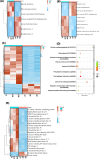
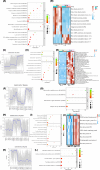
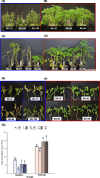
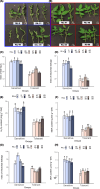

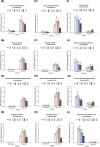
Similar articles
-
Physiological genetic variation in tomato fruit chilling tolerance during postharvest storage.Front Plant Sci. 2022 Sep 8;13:991983. doi: 10.3389/fpls.2022.991983. eCollection 2022. Front Plant Sci. 2022. PMID: 36160961 Free PMC article.
-
Ectopic overexpression of ShCBF1 and SlCBF1 in tomato suggests an alternative view of fruit responses to chilling stress postharvest.Front Plant Sci. 2024 Aug 5;15:1429321. doi: 10.3389/fpls.2024.1429321. eCollection 2024. Front Plant Sci. 2024. PMID: 39161954 Free PMC article.
-
SlGRAS4 mediates a novel regulatory pathway promoting chilling tolerance in tomato.Plant Biotechnol J. 2020 Jul;18(7):1620-1633. doi: 10.1111/pbi.13328. Epub 2020 Jan 25. Plant Biotechnol J. 2020. PMID: 31916348 Free PMC article.
-
Molecular mechanisms involved in postharvest chilling tolerance of pomegranate fruit.J Sci Food Agric. 2019 Oct;99(13):5617-5623. doi: 10.1002/jsfa.9933. Epub 2019 Aug 12. J Sci Food Agric. 2019. PMID: 31321784 Review.
-
The inheritance of chilling tolerance in tomato (Lycopersicon spp.).Plant Biol (Stuttg). 2005 Mar;7(2):118-30. doi: 10.1055/s-2005-837495. Plant Biol (Stuttg). 2005. PMID: 15822007 Review.
Cited by
-
Climate change affects the suitability of Chinese cherry (Prunus pseudocerasus Lindl.) in China.Mol Hortic. 2025 Mar 6;5(1):26. doi: 10.1186/s43897-024-00136-w. Mol Hortic. 2025. PMID: 40050949 Free PMC article.
References
LinkOut - more resources
Full Text Sources
